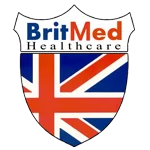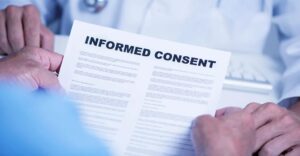Haloperidol
Overview
Haldol, often known as haloperidol, is a member of the first-generation antipsychotic drug family commonly known as normal or conventional antipsychotics. The antipsychotics of the first generation represent an earlier class of antipsychotics that, for many years, set the standard for the treatment of psychotic illnesses.
These older antipsychotics are less potent than a more recent family of second-generation antipsychotics called “conventional” or “typical” due to their limited range of therapeutic action. Additionally, newer generation antipsychotics are more prone to have adverse effects that result in movement problems, compared to the more recent antipsychotics, extrapyramidal symptoms (EPS) and tardive dyskinesia (TD) In comparison to other first-generation antipsychotics, such as Thioridazine with chlorpromazine. The antipsychotics with high potencies cause less sedation and are less likely to reduce blood pressure with postural shifts and less adverse effects from anticholinergic drugs, yet they are linked to EPS is caused by more neurological disorders than by lower-potency antipsychotics.
The U.S. Food and Drug Administration licensed Haloperidol for the treatment of psychotic illnesses, such as behavioral disorders, drug-induced psychosis, schizophrenia, schizoaffective disorder, and Tourette’s syndrome, issues in kids with explosive and aggressive disorders. The term “labeled use” refers to the administration of a drug for its authorized uses. However, in clinical practice, doctors often write prescriptions for unlabeled (or “off-label”) applications of drugs when published research, case studies, or their own clinical experiences support the security and effectiveness of certain therapies. For example, a mood stabilizer may be administered together with Haloperidol because the mood stabilizer takes longer to take effect, treat acute mania. Once the manic symptoms subside, the mood stabilizer is continued on its own, and Haloperidol is stopped.
Generic formulations of haloperidol pills, oral solution, and decanoate are supplied by different manufacturers. However, the brand Haloperidol is only available as injectables (Haloperidol Injection and Haloperidol Decanoate). The preparation Haloperidol decanoate has a lengthy half-life. Haloperidol Decanoate is administered via deep intramuscular injection is taken gradually into the bloodstream from its depot location after being deposited into muscle tissues. For those who may find it difficult to take their prescriptions on time, Haloperidol Decanoate provides the ease of a long-term acting injectable, which may be used every 2-4 weeks in place of taking medicine orally.
Information about Dosing
When treating schizophrenia, an initial dosage of 2–10 mg of oral Haloperidol administered once day is advised Ideally in the evening or just before bed. It may be taken with or without food. It’s possible to raise the dose weekly in doses of 5 mg/day increments. Typically, the dose ranges from 10 mg to 20 mg per day and if the patient is unable to handle a once-day dosage, it may be given twice daily. Doses more than 20 milligrams /day could be required for some patients.
A deep intramuscular injection is used to give Haloperidol decanoate. Stabilizing patients’ symptoms is important prior to switching to the injection, while they are ingesting the oral version. The Haloperidol Decanoate starting dose should not exceed 100 mg, and the patient may have to keep taking Haloperidol orally until the decanoate becomes effective.
The dose is decided. Every three to four weeks, 100–200 mg of Haloperidol Decanoate is the typical maintenance dose. Haloperidol is gradually absorbed into the body after being separated from the decanoate chain at the intramuscular injection site.
Typical Side Effects
Compared to lower-potency antipsychotics, Haloperidol is less sedative; yet, it causes annoying side effects known as extrapyramidal symptoms. These are antipsychotic-induced neurological disorders (or a neurological illness) in the part of the brain responsible for managing motor coordination. It is more probable for Haloperidol to cause EPS than agents of less potency. A specific region of the brain might experience disturbance, which can result in symptoms.
characteristics resemble parkinsonism, the condition that causes Parkinson’s disease, such as tremor, drooling, muscular rigidity, and a “mask-like” look on the face. But in contrast to Parkinson’s disease, a neurological disorder that worsens over time, Generally, parkinsonism brought on by antipsychotic therapy is reversible. The signs of Parkinson’s disease might include anticholinergic, or antiparkinsonian, drugs, like Cogentin, may be used to treat and prevent (benztropine), (trihexyphenidyl), Benadryl (diphenhydramine), and (procyclidine).
Another kind of EPS is called akathisia, and it is characterized by a subjective feeling of restlessness coupled with agitation, discomfort in the muscles, anxiousness, and fidgeting Antiparkinsonian drugs are typically inadequate for the treatment of akathisia. Using the beta-blocker Inderal (propranolol) may be beneficial and is as directed by medical professionals.
One kind of EPS with an abrupt onset is dystonia. The patient might have an abrupt spasm of the muscles in the neck, jaw, and tongue. There isn’t an allergy to the antipsychotic drug causing this. Despite the unpleasant and terrifying nature of dystonic reactions, they may be quickly reversed with an intramuscular injection of an anticholinergic drug like Benadryl or Cogentin. When a patient has a dystonic response, they should Get treated right away and obtain medical care.
Prolactin elevation is a typical side effect of traditional antipsychotics. The pituitary gland, located in the brain, is the organ that produces the hormone prolactin. It is often higher among women who have just given birth promoting the production of milk, or lactation. Increased prolactin may cause breast hypertrophy and, in both genders, milk production (galactorrhea) occurs. Another correlation between impotence and elevated prolactin is
in males, and irregular or nonexistent menstrual periods in females. If prolactin levels start to concern you, you may try one of the second-generation antipsychotics instead.
substances that don’t seem to increase this hormone.
Haloperidol, Haldol’s impact on weight gain is mild. It’s unknown whether there’s a biochemical cause for this alteration brought on by the antipsychotic or by an increase in hunger. Throughout treatment, weight should be regularly evaluated, and if weight gain happens, a diet and activity intervention program should be initiated.
With Haldol, orthostatic hypotension and anticholinergic side effects are often less concerning than they are with the antipsychotics of modest potency.
Adverse Events and Safety Measures
Haloperidol may decrease mental and physical alertness, as well as produce sleepiness and sedation. Individuals should hold off on engaging in potentially risky tasks like operating equipment or driving a vehicle until they are certain that their capacity to do these jobs won’t be impacted by these adverse effects.
One possible side effect of antipsychotic treatment is tardive dyskinesia. It is distinguished by aberrant involuntary motions that develop slowly. With symptoms that might be permanent, TD is a disorder that often involve darting and writhing tongue motions, “pill-rolling” finger gestures, lip-pursing, grimacing on the face, and other erratic gestures. The length is linked to the risk of TD of antipsychotic drug exposure, and the danger rises with advancing years. The typical antipsychotics that are compared to the more current second-generation antipsychotics, linked to a higher incidence of TD.
An uncommon and severe response to antipsychotics is known as neuroleptic malignant syndrome (NMS). The signs and symptoms include extreme tightness and stiffness of the muscles, a high body temperature, a high heart rate and blood pressure, and irregular
heartbeat and heavy perspiration. Coma and delirium may result from NMS. If medical assistance is not received, it may be deadly. There are no diagnostic procedures to determine a person’s susceptibility to getting NMS when exposed to antidepressants. Because NMS is a medical emergency, it must be identified as soon as possible. requires admission to the hospital, critical care, and the abrupt stopping of the antipsychotic.
Antipsychotics have the potential to reduce the threshold for seizures and cause seizures in those who are vulnerable, particularly people who have had seizures in the past. Individuals suffering from a seizure illness and on anticonvulsants of Antipsychotics are given to ten without causing a rise in seizures.
The FDA discovered that there may be a higher risk involved with first-generation antipsychotic medications of death when administered to senior citizens suffering from psychosis brought on by dementia. According to the FDA, all Haloperidol is one of the antipsychotic drugs that is not recommended for treating senior dementia patients. doctors who give elderly patients antipsychotic drugs for psychosis associated with dementia
ought to talk about this potentially catastrophic danger with the patient, their family, or their caregiver.
Utilization during pregnancy and nursing: Category C
The safety of Haloperidol during pregnancy has not been investigated in female subjects. The medication’s impact on Pregnant women’s growing fetuses remains unknown. Studies on animals showed no evidence of damage to the embryo after being exposed to Haldol. However, results from animal research may not necessarily translate to human outcomes.
Women who are or may become pregnant should talk to their doctor about this. A few females could have a psychotic episode again after stopping Haldol. Under these conditions, the doctor may talk about the need to resume taking the drug or look for a different kind of medicine or medical care. Haloperidol should not be taken by nursing women since minute quantities may enter breast milk and be consumed by the infant. Breastfeeding should not begin if quitting the antipsychotic is not an option, or should be stopped.
Potential Interactions with Drugs
When some drugs are used with Haldol, their levels may change due to drug interactions, which might cause unintended effects.
- Alcohol use should be avoided by patients on Haloperidol since it may exacerbate cognitive, judgmental, and motor impairments.
- Tricyclic antidepressants (TCAs): Elavil, Haldol, and other TCAs may raise TCA blood levels. This might exacerbate the toxicity and adverse effects of these antidepressant kinds.
- Carbamazepine, or Tegretol may lower the amount of Haloperidol in the blood diminishing its potency.
- Barbiturates like phenobarbital have the ability to lower the Haloperidol blood levels and its therapeutic efficacy.
- Carbonate of lithium and Haloperidol together might be linked to an increased risk of negative responses like neurotoxicity. Even so, the two Drugs are often given in combination and appear For both safety and efficacy, they need to be monitored
observed. - Prozac, also known as fluoxetine Prozac may prevent Haloperidol from being metabolized and raise blood levels, which might lead to an increase in Haldol’s adverse effects and toxicity.
- Venlafaxine, or Effexor may decrease Haldol’s clearance and raise the blood levels of Haldol, perhaps exacerbating the antipsychotic’s negative side effects.
Overdosing
Depression of the central nervous system (CNS) accompanied with low blood pressure, EPS, and profound somnolence typical symptoms of a Haloperidol overdose. Serious side effects might include convulsions, agitation, and restlessness, arrhythmias, coma, and fever. The quantity of Haloperidol consumed determines the risk of overdosing and mortality. Especially if it was used in combination with other drugs, particularly CNS depressants.
Treating any suspected overdose as an emergency is imperative. The individual has to be brought to the emergency space for care and observation. It is advisable to bring the prescription bottle of medicine (as well as any additional medication that may have been taken in excess) since the information on the label may be useful in helping the treating physician figure out how many tablets the patient has taken.
Precaution Points to Remember
Haloperidol should not be stopped without first talking to your doctor.
• Take the missed dosage as soon as you remember. Ignore the missed dosage if the next scheduled dose is approaching and go on with your usual dosage regimen. Avoid taking two doses at once. You may take Haloperidol with or without meals.
• Haloperidol may make you drowsy and sedentary, particularly after starting treatment. It may also affect your attentiveness. When driving or doing other duties that call for attentiveness, proceed with care.
- Keep the medicine out of direct sunlight and dampness, in the light-resistant container that came with it. Warmth and Moisture may hasten the disintegration of your prescription and cause it to lose its medicinal benefits.
• Make sure kids can’t get to your medicine.




